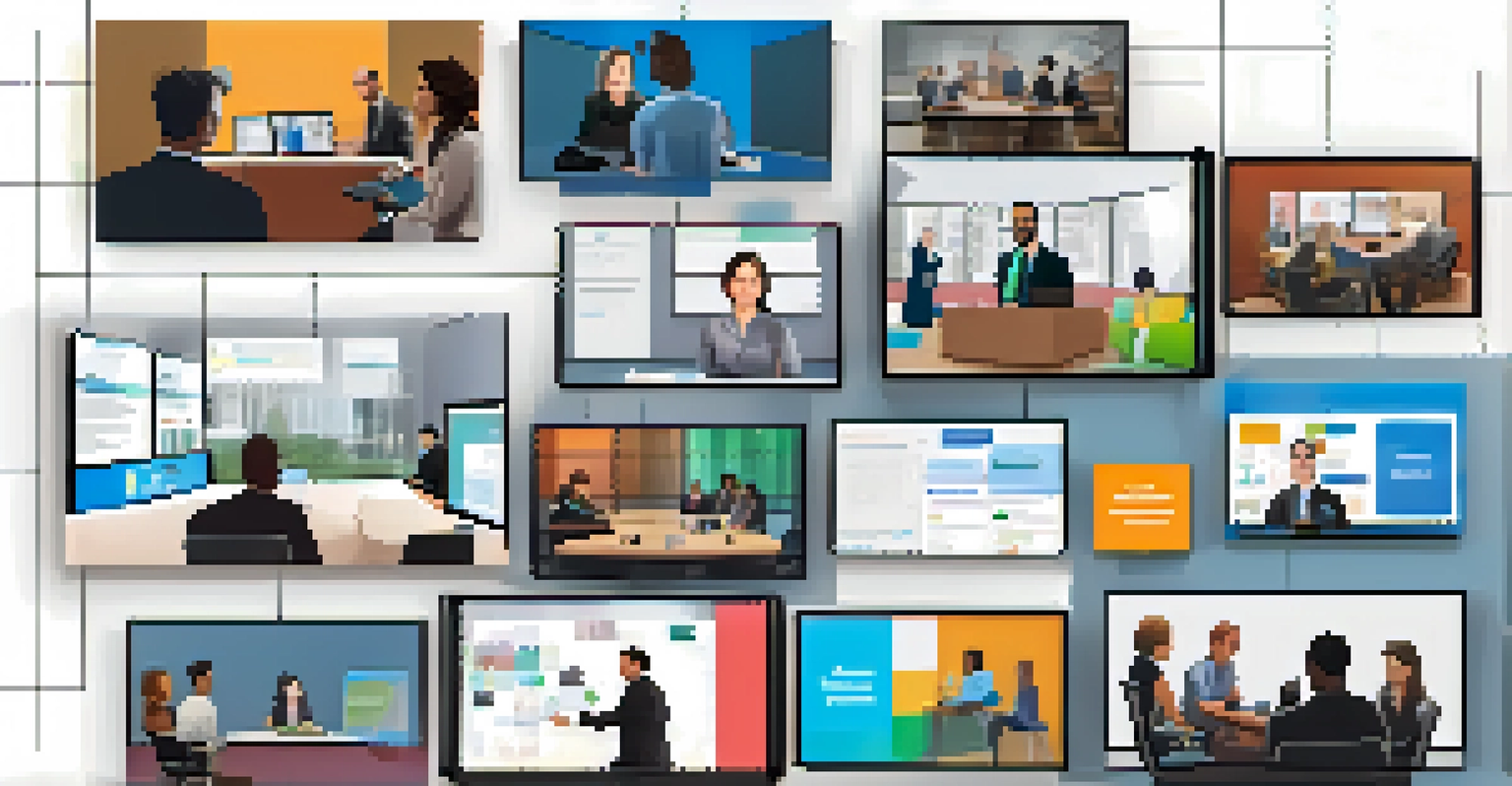The Future of Trade Shows in the Post-Pandemic Era

The Shift to Hybrid Events: Blending In-Person and Virtual
The pandemic has reshaped how we think about trade shows, leading to the rise of hybrid events. These gatherings combine the best of both worlds, allowing in-person attendees to connect while also accommodating those who prefer to join virtually. This shift is not just a temporary fix; it reflects a fundamental change in how we engage with audiences.
The future of trade shows lies in their ability to blend tradition with modernity.
For instance, companies can now reach wider audiences than ever before, breaking geographical barriers that once limited participation. Imagine a small business in a remote area showcasing its products to global buyers—this is now possible thanks to digital technology. Hybrid formats also allow for more flexible scheduling, catering to the varying needs of attendees.
However, organizing a successful hybrid event requires careful planning and execution. Event planners must ensure that both virtual and on-site experiences are seamless, engaging, and interactive. By investing in the right technology and creating content tailored for different audiences, trade shows can thrive in this new environment.
Health and Safety: A New Priority for Attendees
As we venture back into physical trade shows, health and safety have become paramount concerns. Attendees are now more aware of their surroundings, and organizers must prioritize creating a safe environment. This could mean enhanced sanitation measures, crowd management strategies, and clear communication about health protocols.

For example, many events are adopting contactless registration and payment systems, minimizing physical interaction. Additionally, increasing the availability of hand sanitizers and ensuring proper ventilation can help put attendees at ease. Trade show organizers must be transparent about their safety measures to build trust with potential participants.
Hybrid Events Are Here to Stay
The rise of hybrid events combines in-person and virtual experiences, expanding audience reach and accessibility.
In this new landscape, those who prioritize safety will likely see increased attendance and positive feedback. By fostering a sense of security, trade shows can encourage more participants to engage and network, ultimately enhancing the event's success.
Sustainability: The Green Movement in Trade Shows
Another significant trend emerging in the post-pandemic trade show landscape is sustainability. With growing awareness of environmental issues, both exhibitors and attendees are increasingly seeking eco-friendly practices. This shift is not only beneficial for the planet but can also enhance a brand's reputation.
Sustainability is no longer an option; it's a necessity.
For instance, companies are now opting for sustainable materials for their booths and promotional items. Using recyclable materials and minimizing waste can significantly reduce the environmental impact of trade shows. Additionally, offering digital alternatives to printed materials can further align with sustainability goals.
As businesses embrace green practices, they can attract eco-conscious consumers and partners. Trade shows that prioritize sustainability not only contribute to a healthier planet but also position themselves as forward-thinking leaders in their industry.
Technology Integration: Enhancing Engagement and Experience
Technology has always played a role in trade shows, but its importance has skyrocketed in the post-pandemic era. From virtual reality experiences to AI-driven matchmaking, innovative tools are enhancing engagement and creating memorable experiences for attendees. This tech-savvy approach is essential for capturing the attention of diverse audiences.
For example, augmented reality can allow visitors to interact with products in ways that were previously unimaginable. Imagine walking into a booth and visualizing how a piece of furniture would look in your home using AR technology. Such experiences can leave a lasting impression and encourage deeper connections.
Safety Measures Are Essential
Health and safety now play a crucial role in trade shows, necessitating enhanced protocols to build attendee trust.
Moreover, data analytics tools are helping organizers understand attendee preferences and behaviors better. By analyzing this data, trade shows can tailor content and experiences to meet the needs of their audience, ultimately leading to more successful events.
Networking in a Digital World: New Opportunities
Networking has always been a cornerstone of trade shows, and the pandemic has transformed how we connect. With the rise of virtual platforms, attendees can now network from the comfort of their homes. This shift opens up new opportunities for meaningful connections that may not have happened in a traditional setting.
For instance, online breakout rooms can facilitate discussions among smaller groups, allowing for more intimate networking opportunities. Additionally, social media platforms can serve as effective tools for connecting with other attendees before, during, and after the event. This expanded networking potential can lead to fruitful collaborations and partnerships.
However, it’s essential to remember that successful networking still requires effort and intention. Attendees should actively engage in conversations and follow up with connections made during events. By leveraging both in-person and digital opportunities, trade shows can enhance their networking potential.
The Role of Content: Informative and Relevant Experiences
In the post-pandemic trade show landscape, content has taken center stage. Attendees are looking for informative and relevant experiences that cater to their interests and needs. This trend emphasizes the importance of curating high-quality content that resonates with diverse audiences.
For example, organizers can offer workshops, panel discussions, and keynote speeches featuring industry leaders. By providing valuable insights and real-world applications, trade shows can create a more engaging atmosphere that encourages attendees to participate actively. This focus on content helps to establish the event as a valuable resource in the industry.
Sustainability Drives New Practices
A growing emphasis on eco-friendly practices is reshaping trade shows, enhancing brand reputations while benefiting the planet.
Moreover, leveraging different formats—such as podcasts, videos, and interactive sessions—can cater to various learning preferences. By diversifying content delivery, trade shows can enhance attendee engagement and ensure that everyone leaves with meaningful takeaways.
The Future of Trade Shows: Adaptability and Innovation
As we look to the future, adaptability and innovation will be crucial for trade shows to thrive. The challenges posed by the pandemic have forced organizers to rethink their strategies and embrace new ideas. This willingness to evolve will be the key to success in a rapidly changing landscape.
For instance, trade shows that continuously seek feedback from attendees and exhibitors can identify areas for improvement and innovation. Staying attuned to industry trends and technological advancements will also help organizers stay relevant. By being proactive and open to change, trade shows can create unique experiences that captivate audiences.

Ultimately, the future of trade shows lies in their ability to blend tradition with modernity. By embracing new formats, technologies, and sustainability practices, trade shows can remain valuable platforms for connection, learning, and growth in a post-pandemic world.